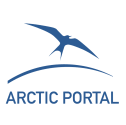Sorry, but the page you are looking for might have been removed, had its name changed, or is temporarily unavailable.
We apologize for the inconvenience.
Please try the following:
- If you typed the page address in the Address bar, make sure that it is spelled correctly.
- Use our sitemap to find the content you are looking for
- Click the Back button in your browser to try another link.
- In the case of a broken link, please report it to the Arctic Portal IT department

